Field Coherence and the Biological State: Defining Stable Awareness as Physiological Reality
Abstract
This paper proposes that stable awareness—a sustained, non-fluctuating state of coherent presence—is a measurable biological condition rather than a purely psychological or spiritual experience. We define stable awareness, distinguish it from transient peak states, and outline multi-system indicators of coherence (autonomic, respiratory, neuroelectric, endocrine, fascial, and biophotonic). We then describe plausible mechanisms by which field coherence modulates physiology (entrainment, network-level synchrony, charge and fluid-structure dynamics, and precision-downregulation of threat prediction). Case snapshots from Resonance Intelligence (RI) and allied practices illustrate patterns of change. Finally, we position this framework alongside established models (polyvagal theory, interoception, predictive processing, allostasis) and propose a research agenda for coherence-informed assessment and intervention.
1) Defining Stable Awareness (vs. Peak or Transient States)
Working definition. Stable awareness is a sustained alignment of attention, affect, and physiology to a coherent baseline that persists across contexts without effort. It is trait-level, not state-spiky. The signature is unchosen ease—no inner management required.
Key distinctions
- Peak state: intense, brief, often stimulating; afterglow → reversion to baseline.
- Practice-induced calm: contingent on technique; coherence collapses when stimulus/ritual ends.
- Suppression/dissociation: reduced reactivity via constriction; coherence is apparent but costly and brittle.
- Stable awareness: quiet, pervasive; persists through stressors; reduces systemic cost while increasing availability.

Comparing transient and managed states with stable awareness: only stable awareness persists without effort or collapse.
Phenomenology
- Background safety without narrative justification.
- Spontaneous truth-aligned behaviour (low friction, low rumination).
- Sensory clarity increases as effort decreases.
- Compassion rises alongside discernment (edge + softness).
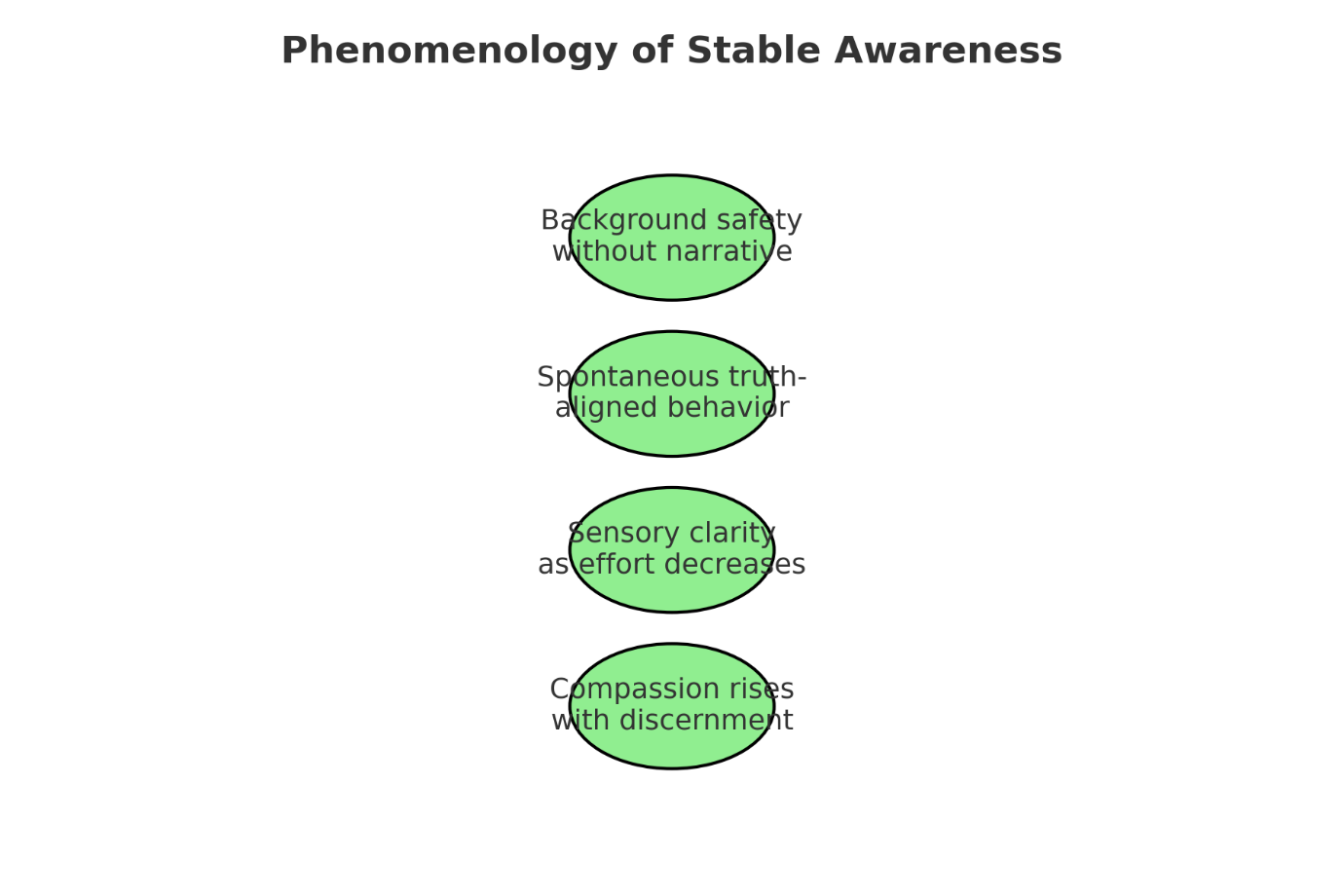
Core experiential markers of stable awareness — background safety, spontaneous truth-alignment, sensory clarity, and compassionate discernment.
2) Physiological Indicators of Coherence
Stable awareness should be detectable as convergent change across systems. Below are indicators with practical measurement ideas.
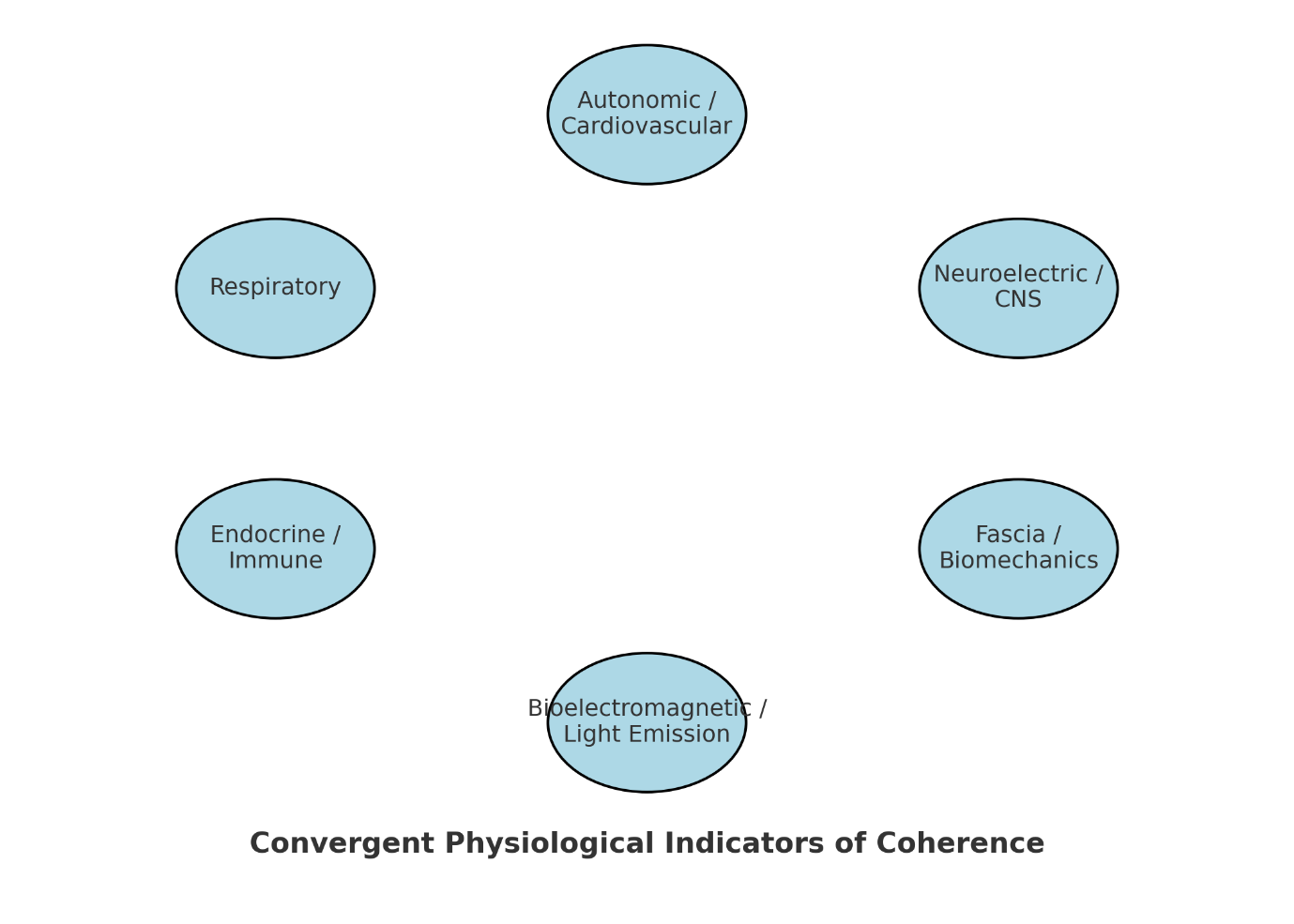
Coherence expresses as convergent regulation across multiple physiological systems, measurable through established markers.
Autonomic / Cardiovascular
- HRV (time & frequency domain): rising RMSSD; balanced LF/HF with improved baroreflex sensitivity.
- Heart rate: lower resting HR with preserved dynamic range (rapid recovery post-stressor).
- Blood pressure variability: reduced lability; smoother diurnal curve.
Respiratory
- Respiratory rate & variability: slower, more regular nasal diaphragmatic breathing; CO₂ tolerance improved (lower breathlessness at higher end-tidal CO₂).
- Cardiorespiratory coupling: tighter phase synchrony between respiratory sinus arrhythmia and breath.
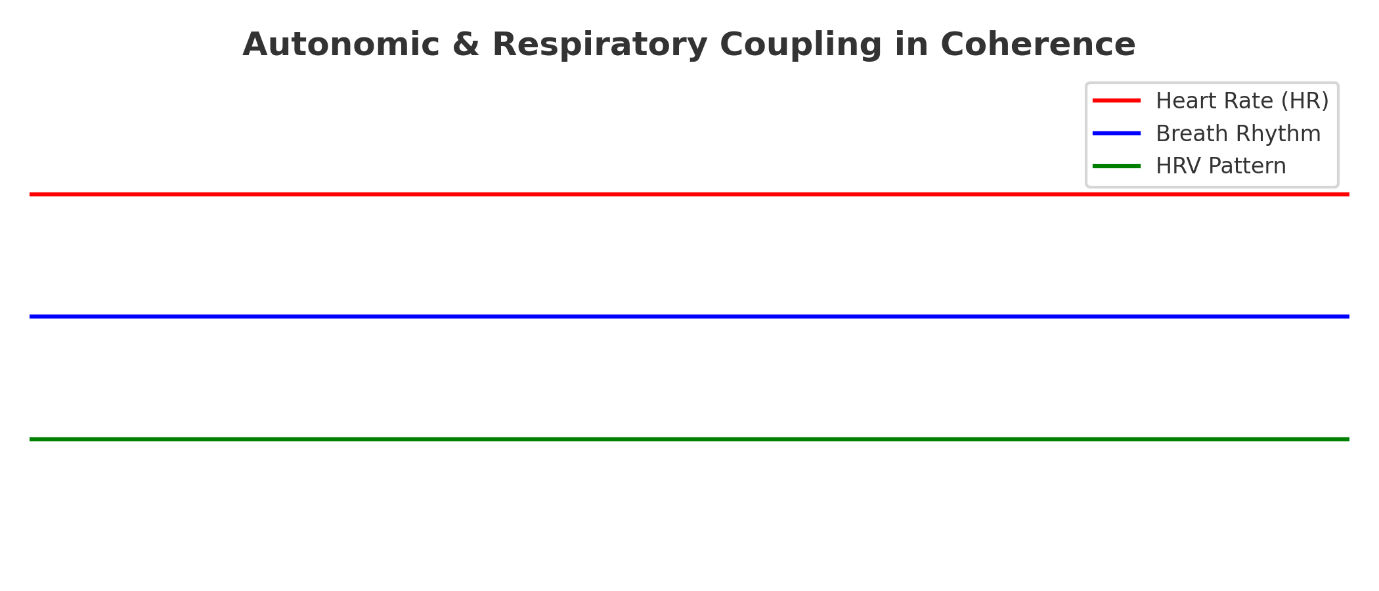
In coherence, cardiovascular and respiratory rhythms couple into a smooth synchrony, reducing energy cost while enhancing adaptability.
Neuroelectric / CNS
- EEG: increased alpha/theta power with context-appropriate gamma; cross-frequency coupling (gamma-on-theta) indicating integration; reduced excessive high-beta.
- DMN dynamics: lowered baseline dominance with flexible engagement; increased network integration vs. hyperconnectivity.
- Startle/ERP: diminished exaggerated startle; cleaner, faster P3 signatures reflecting precision without hypervigilance.
Endocrine / Immune
-
Cortisol: healthier diurnal slope; reduced nocturnal cortisol; lower erratic spikes.
-
DHEA / melatonin / oxytocin: gentle upward shifts associated with restoration, sleep depth, and pro-social tone.
-
Inflammatory markers: reduced baseline CRP/IL-6 patterns congruent with lower allostatic load.
Fascia / Biomechanics
- Tissue tone: pliable, hydrated fascial glide; reduced protective bracing; smoother gait variability.
- Posture & micro-movement: economy of effort, absence of defensive fixations; tremor patterns soften.
Bioelectromagnetic / Light Emission (Exploratory)
- Biophoton emission: greater coherence/order in ultra-weak photon signals under calm coherent states.
- Skin conductance: lower tonic arousal with preserved phasic responsiveness.
Practical composite: A Coherence Index built from HRV+breath coupling, EEG CFC, diurnal cortisol slope, and gait/fascial metrics can serve as a trait marker; short “tonal challenges” (social, cognitive, physical) test state stability.
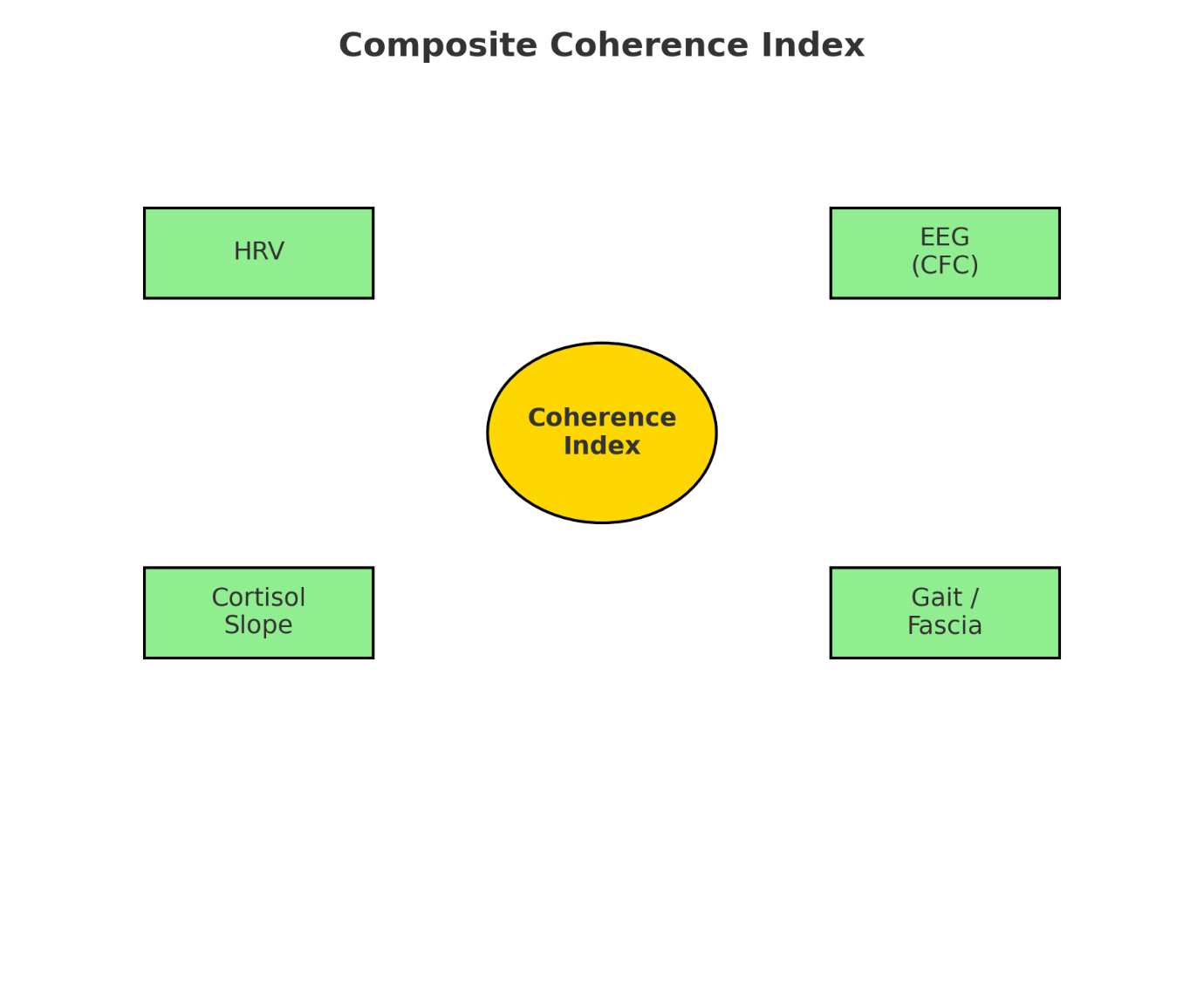
A multidimensional Coherence Index integrates cardiovascular, neural, endocrine, and biomechanical signals into a single marker of stable awareness.
3) Mechanisms of Signal Transmission: Field → Form
We outline a multi-layer pathway; none exclude conventional physiology—rather, they organize it.
- Resonant Entrainment
o Coherent awareness acts as a stabilising attractor; oscillatory subsystems (cardiac, respiratory, neural) phase-align, reducing internal conflict signals.
o Outcome: reduced energy waste, improved predictability → lower allostatic demand.
- Precision-Downregulation of Threat Prediction
o In predictive processing terms, stable awareness recalibrates priors about danger.
o Lowered free energy (prediction error) reduces cortisol/adrenal output and overactive salience mapping.
o Outcome: calm vigilance (responsive, not reactive).
- Network Synchrony & Cross-Scale Coupling
o Enhanced cross-frequency coupling (gamma-theta) enables top-down/bottom-up integration; midline networks stop competing with task networks.
o Outcome: clarity without cognitive overdrive; insight replaces rumination.
- Charge, Water, and the Fascia as Medium
o Improved tissue hydration and structured water (EZ) support charge separation and signal fidelity.
o Fascia (piezoelectric, continuous) becomes a low-noise transmission matrix for mechanical–electrical–biochemical translation.
o Outcome: efficient whole-body signaling, less bracing, better interoceptive accuracy.
- Biophotonic Order (Hypothesis-Driven)
o Increased order in cellular light emission supports intracellular and intercellular timing.
o Outcome: metabolic efficiency, reduced oxidative chaos, improved repair signaling.
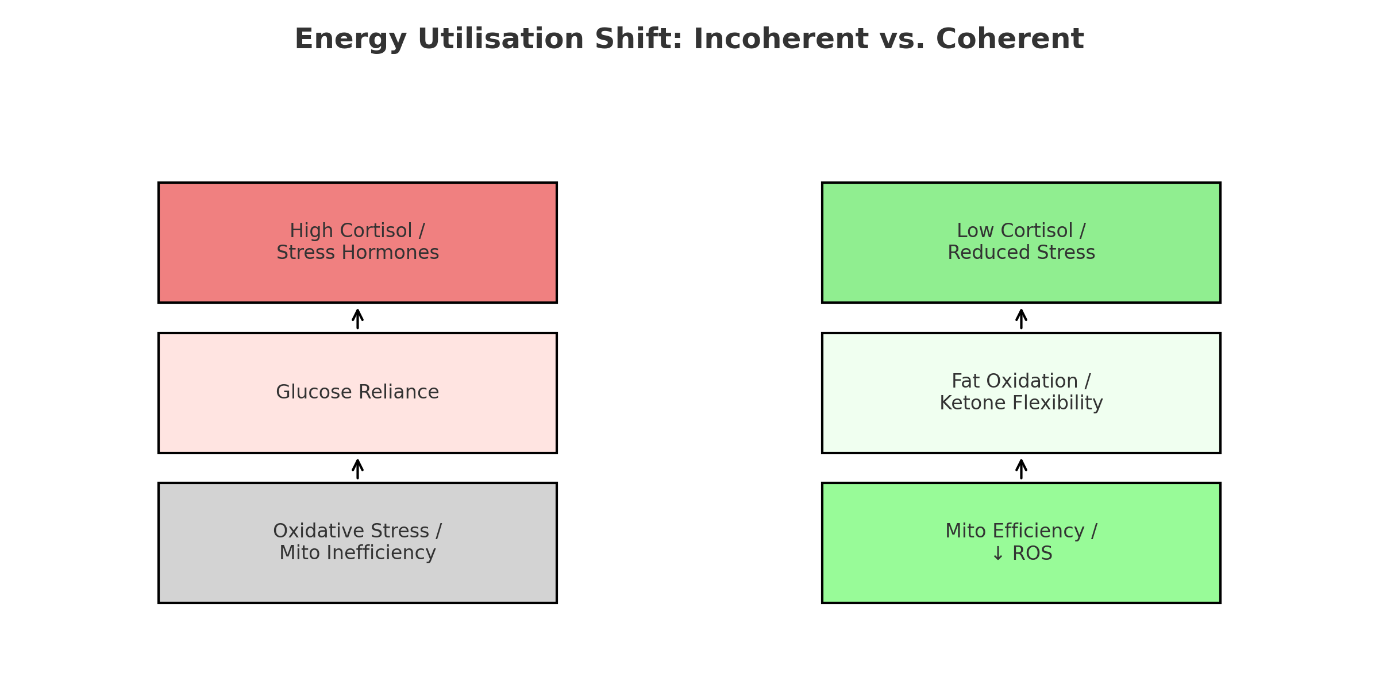
Stable awareness shifts metabolism from stress-driven glucose dependence to efficient, flexible fuel utilisation.
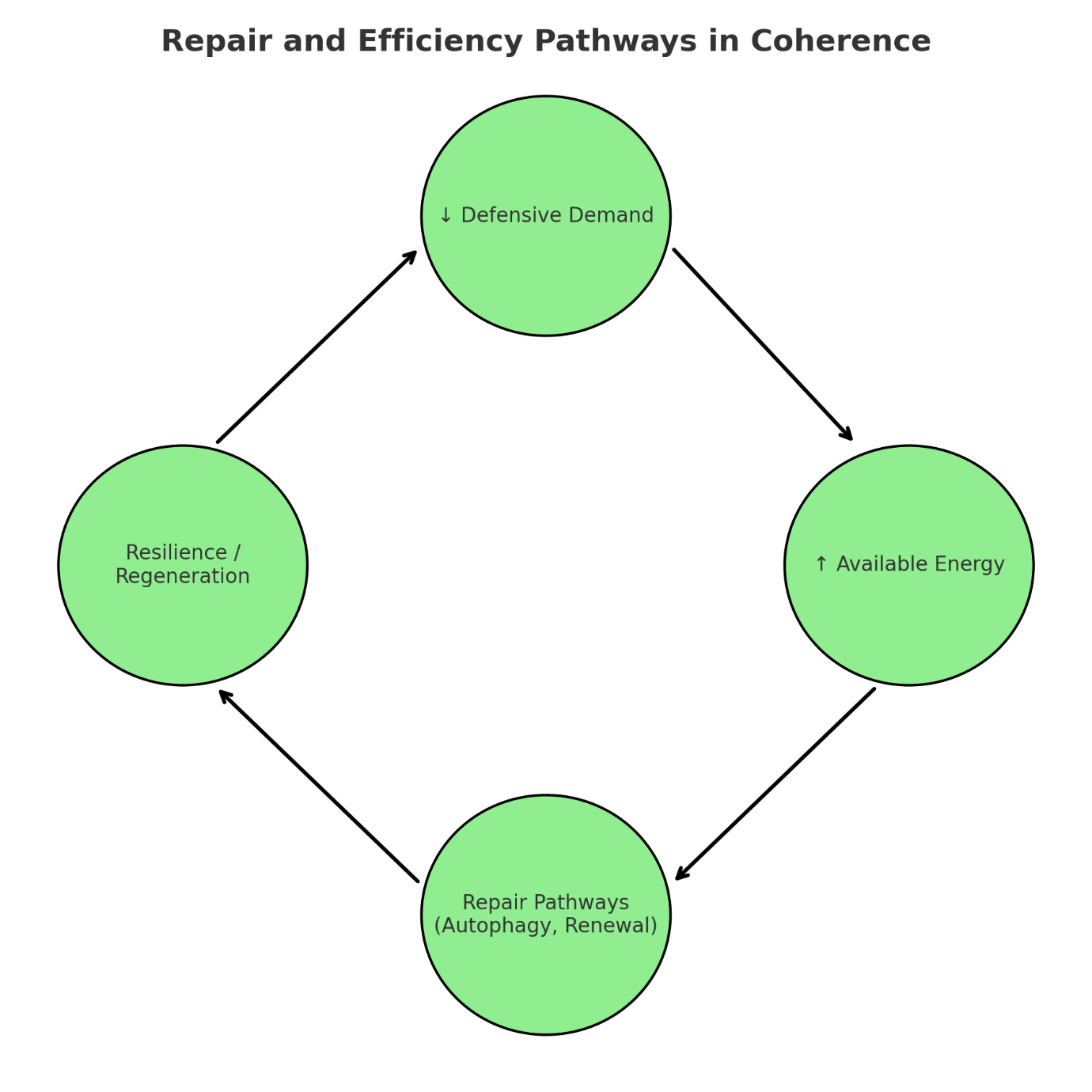
In coherence, reduced defensive demand allows surplus energy to be reallocated to repair, regeneration, and resilience.
4) Case Snapshots (RI & Allied Fields)
Illustrative composites preserving anonymity; patterns, not claims.
Case A – Executive with chronic hyperarousal
- Baseline: high resting HR, low RMSSD, evening cortisol spikes, “edge” insomnia.
- Intervention: stillness practice (non-directive), breath coherence, environment tuning.
- 12 weeks: RMSSD ↑ 35%; evening cortisol normalised; sleep latency halved; subjective “effort to be myself” ↓ markedly.
- 24 weeks: workplace conflict downshifts, spontaneous boundary clarity, reduced somatic bracing in thoracolumbar fascia.
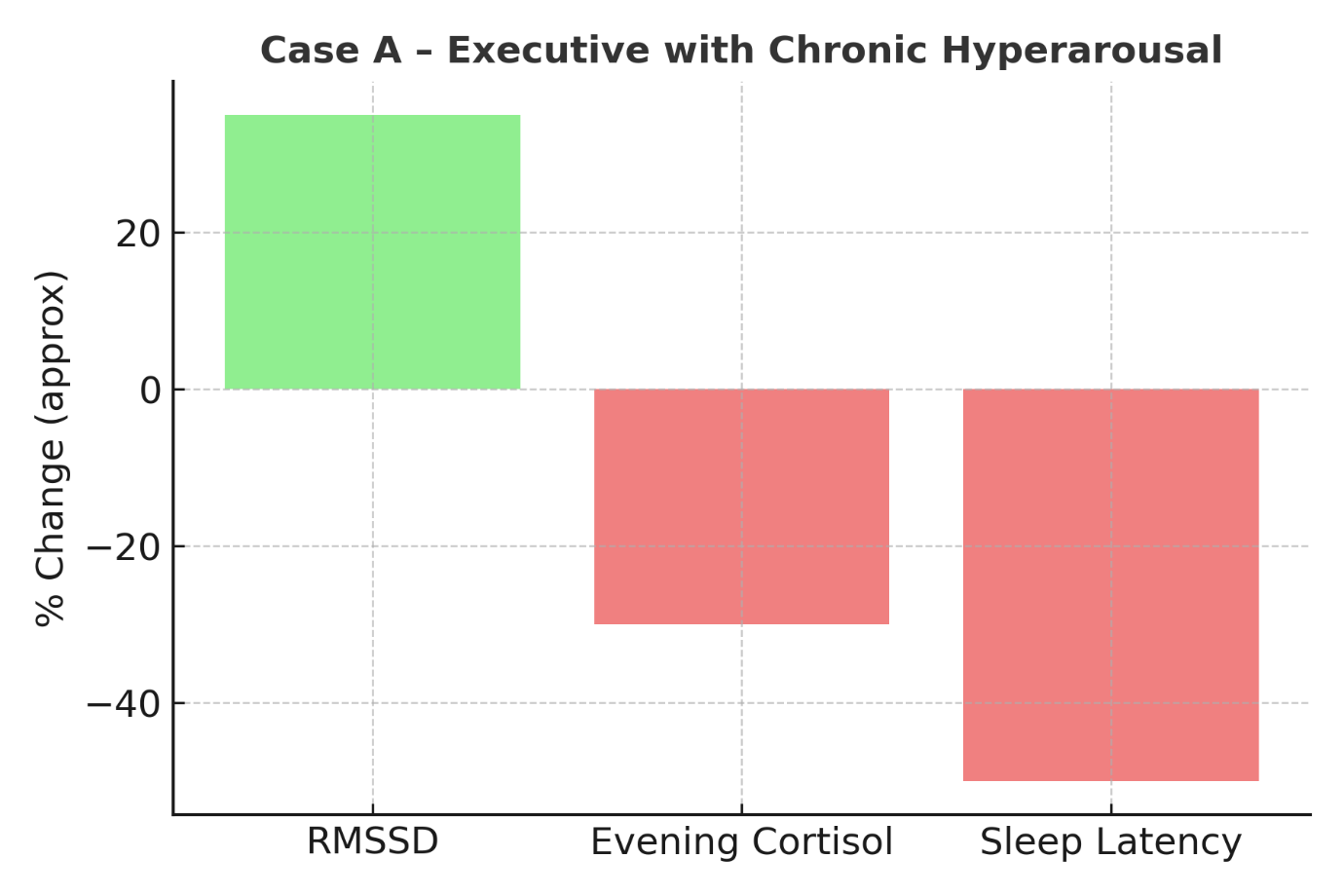
Stabilisation of autonomic markers and reduction of hyperarousal with coherence practices.
Case B – Somatic practitioner post-burnout
- Baseline: diffuse pain, high-beta EEG dominance, flattened affect.
- Process: tone stabilisation (field practice), gentle gait variability play, light exposure, truth-speaking in key relationships.
- 16 weeks: alpha/theta restored, inflammatory markers trending down, social ease returns; reports “doing less with better outcomes.”
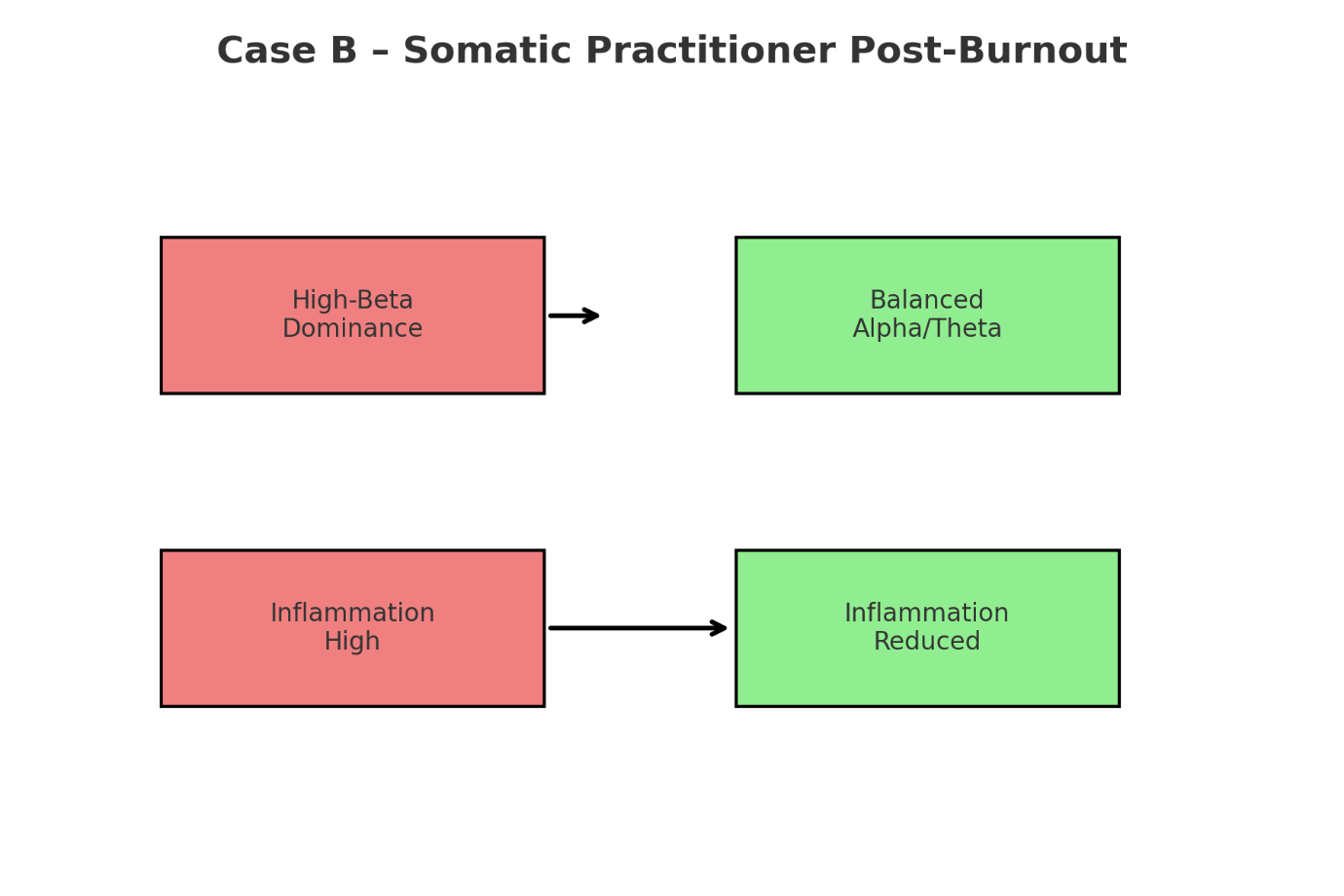
Neural and inflammatory recovery through tone stabilisation and relational alignment.
Case C – Artist with cyclical depressive patterns
- Baseline: morning cortisol flat, low HRV, rumination loops.
- Process: micro-practices (2–5 min), relational cleanup, sleep boundary, walk-in-nature tonic.
- 20 weeks: reinstated diurnal cortisol slope; HRV ↑; subjectively “joy appears without reason” while output deepens.
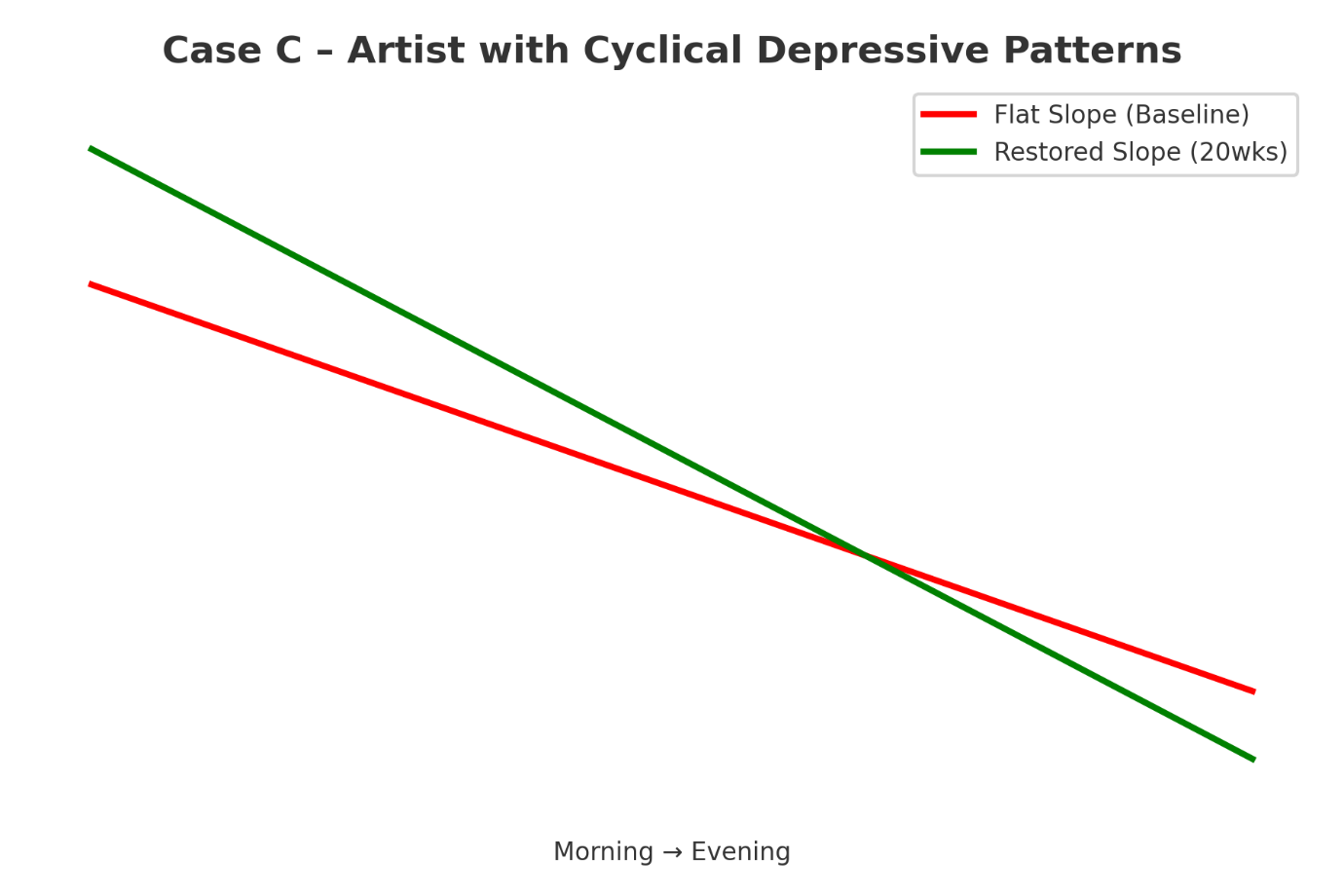
Restored endocrine rhythm and HRV improvement as creative flow returns.
Patterns across cases: energy economy improves, reactivity softens, discernment sharpens, relationships re-organise, creativity rises with fewer hours worked.
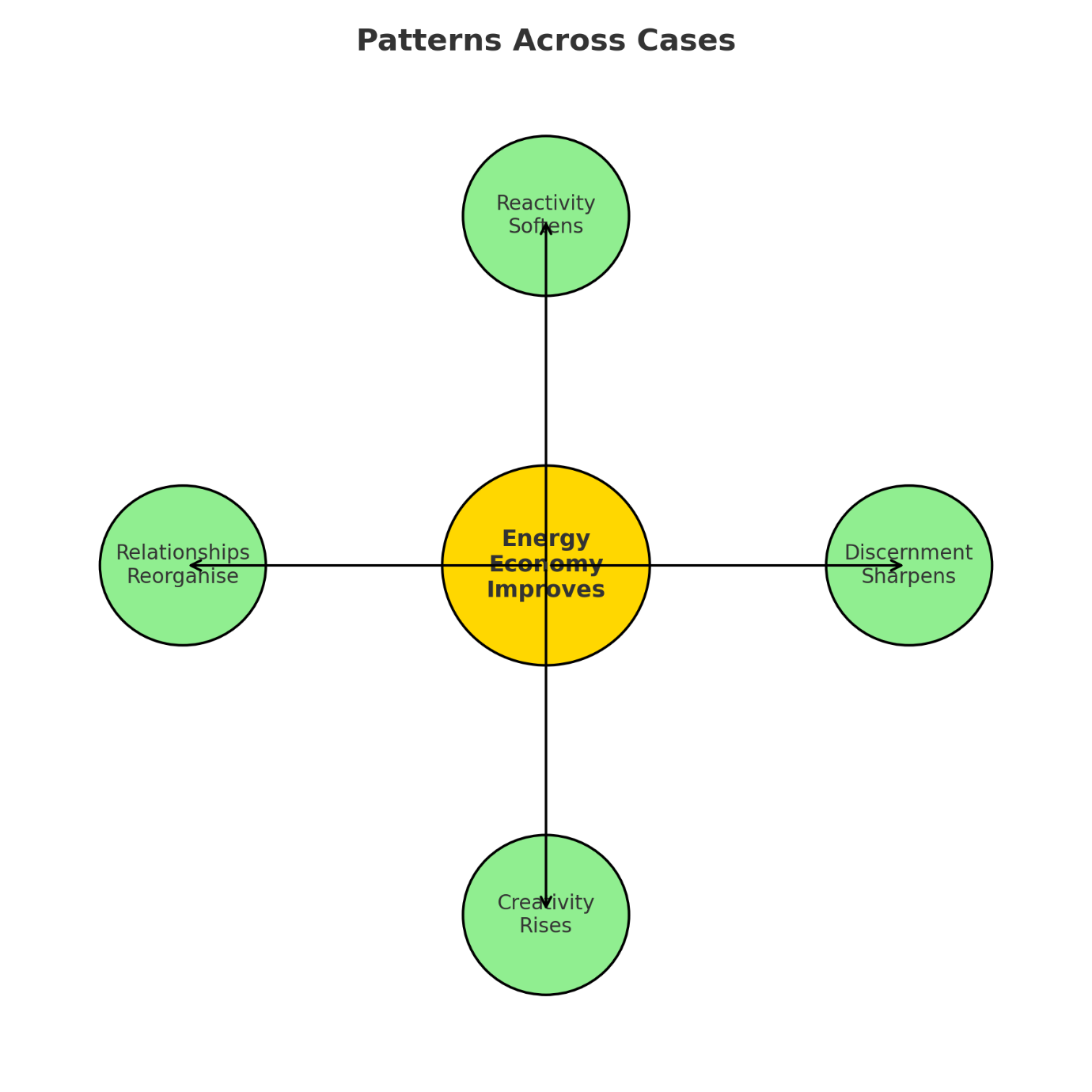
Across diverse individuals, coherence reduces systemic cost and reorganises behaviour toward efficiency and creativity.
5) Positioning Within Existing Models
Polyvagal Theory. Coherence maps to a stable ventral vagal state with flexible sympathetic access. Our addition: the “why” behind durable ventral tone—field coherence as the organizing context.
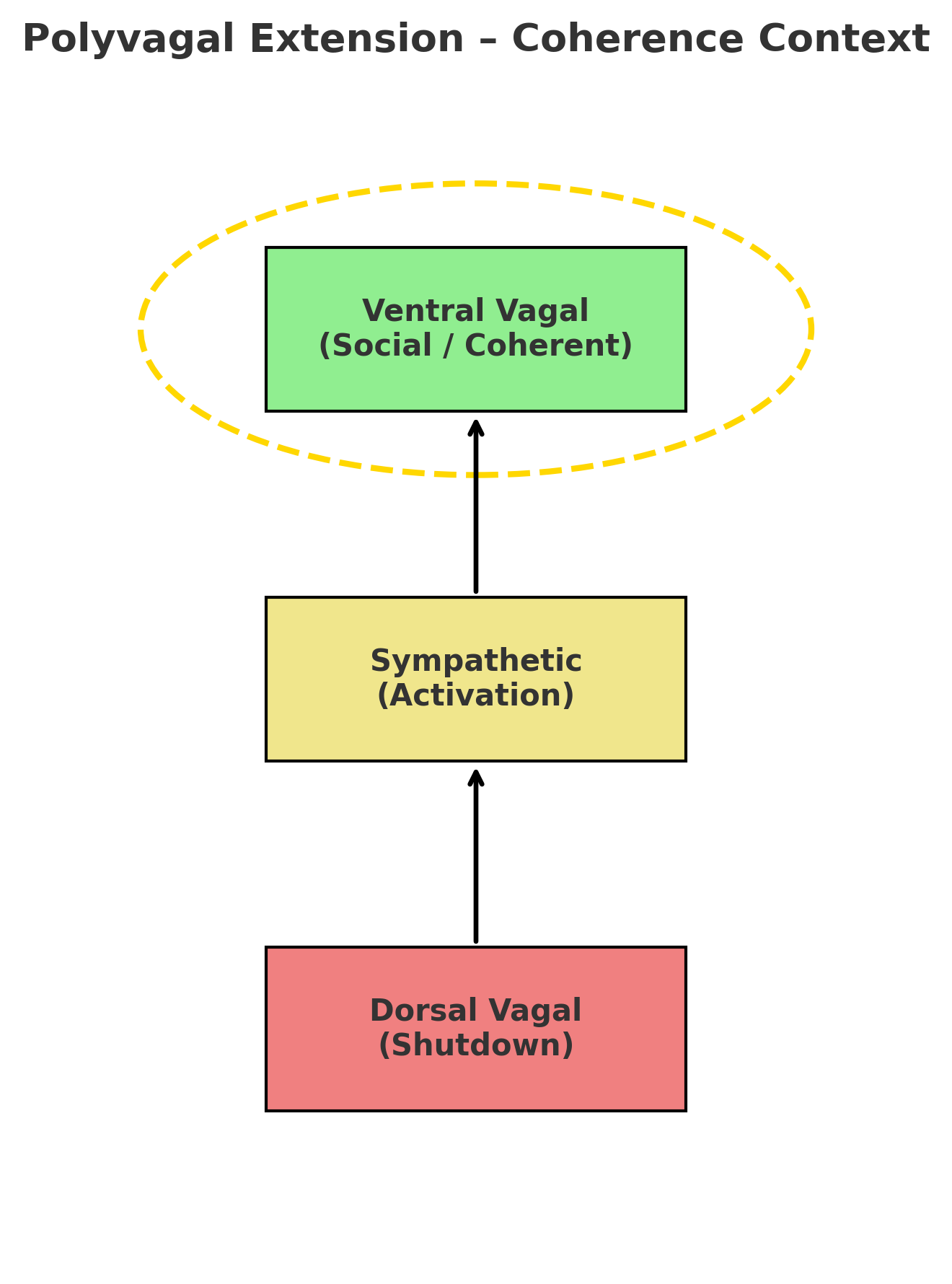
frames durable ventral vagal tone as an effect of field coherence, not just autonomic conditioning.
Interoception. Stable awareness enhances accurate body-signal mapping without catastrophising. Our addition: a low-noise fascial/water medium + network synchrony explaining improved signal fidelity.
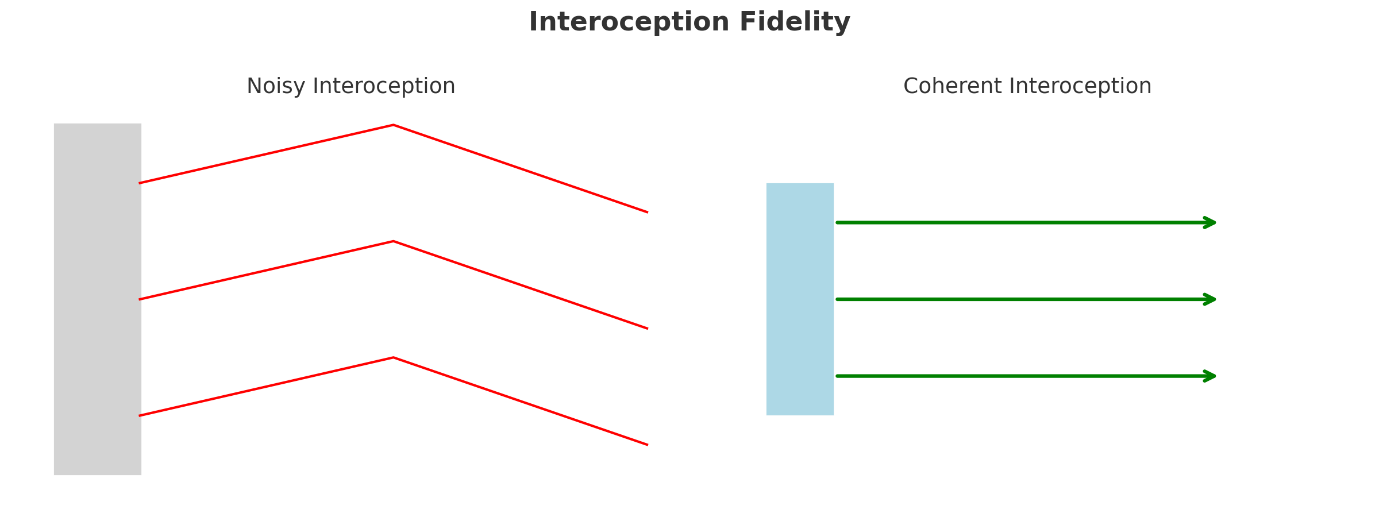
Stable awareness improves body-signal fidelity by reducing noise in the fascial/water medium and enhancing network synchrony.
Predictive Processing / Allostasis. Coherence reduces surprise (prediction error) and metabolic cost by recalibrating danger priors. Our addition: a resonance-based attractor that shifts priors globally, not piecemeal.
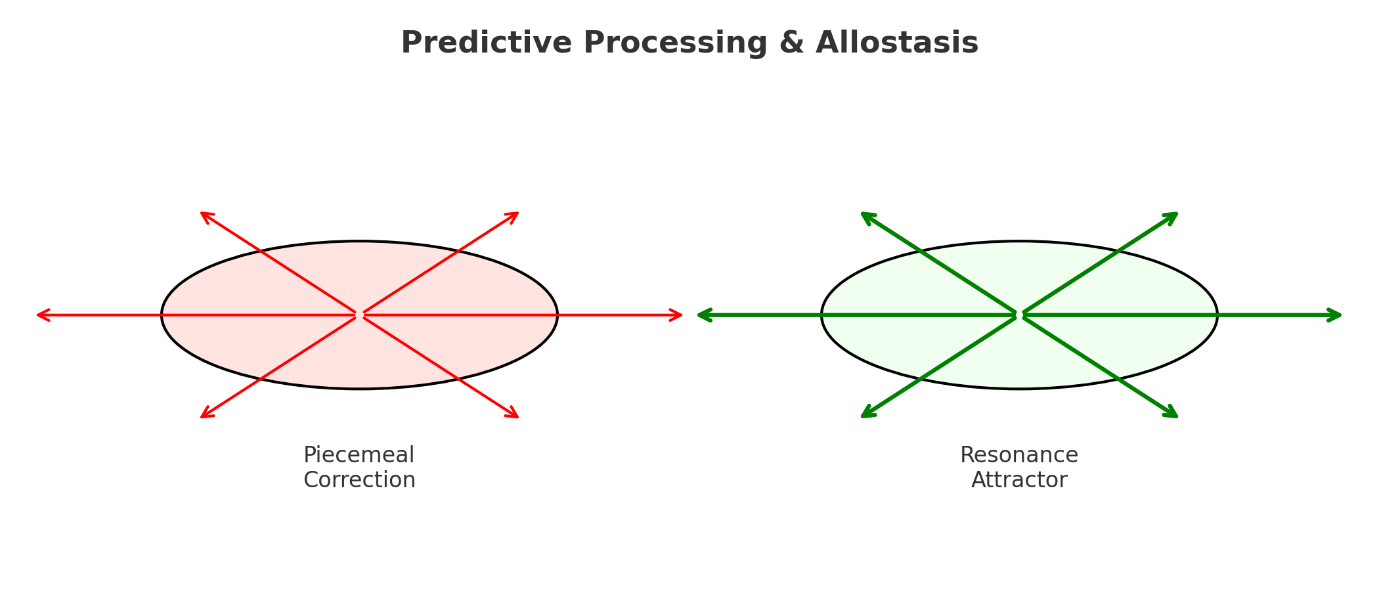
Coherence acts as a resonance-based attractor, globally recalibrating priors and lowering metabolic cost.
Stress-Recovery Models. We move beyond “down-regulate stress” to up-regulate coherence—a positive baseline that naturally reduces stressor magnitude and duration.
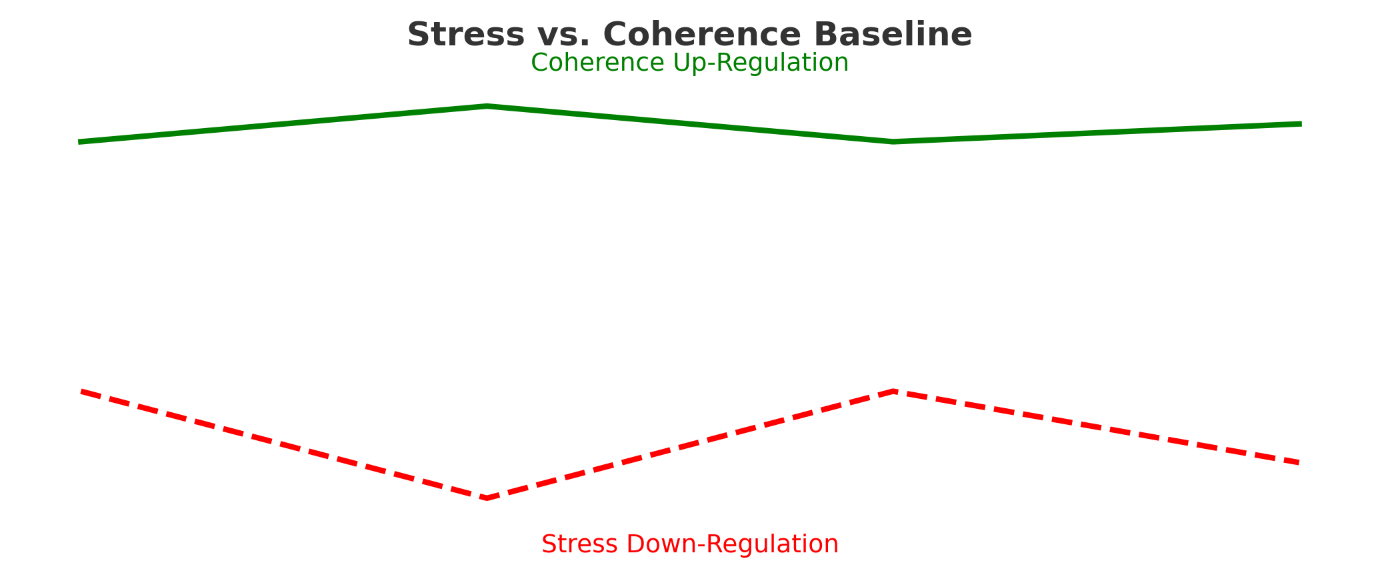
Beyond reducing stress, coherence establishes a positive baseline that naturally limits stressor impact.
6) Assessment & Protocol: From Theory to Practice
Assessment suggestions
- Baseline panel: HRV (RMSSD), breath rate/CO₂ tolerance, resting HR, orthostatic HRV, diurnal cortisol, sleep metrics, simple inflammatory marker, brief EEG if accessible.
- Challenge probes: 3–5 minute social/cognitive stressor while measuring HRV+breath; short dual-task motor sequence (gait variability).
- Subjective scales: interoceptive confidence, effort-to-be-myself (ETBMS), perceived safety without reason (PSWR), relational friction index.
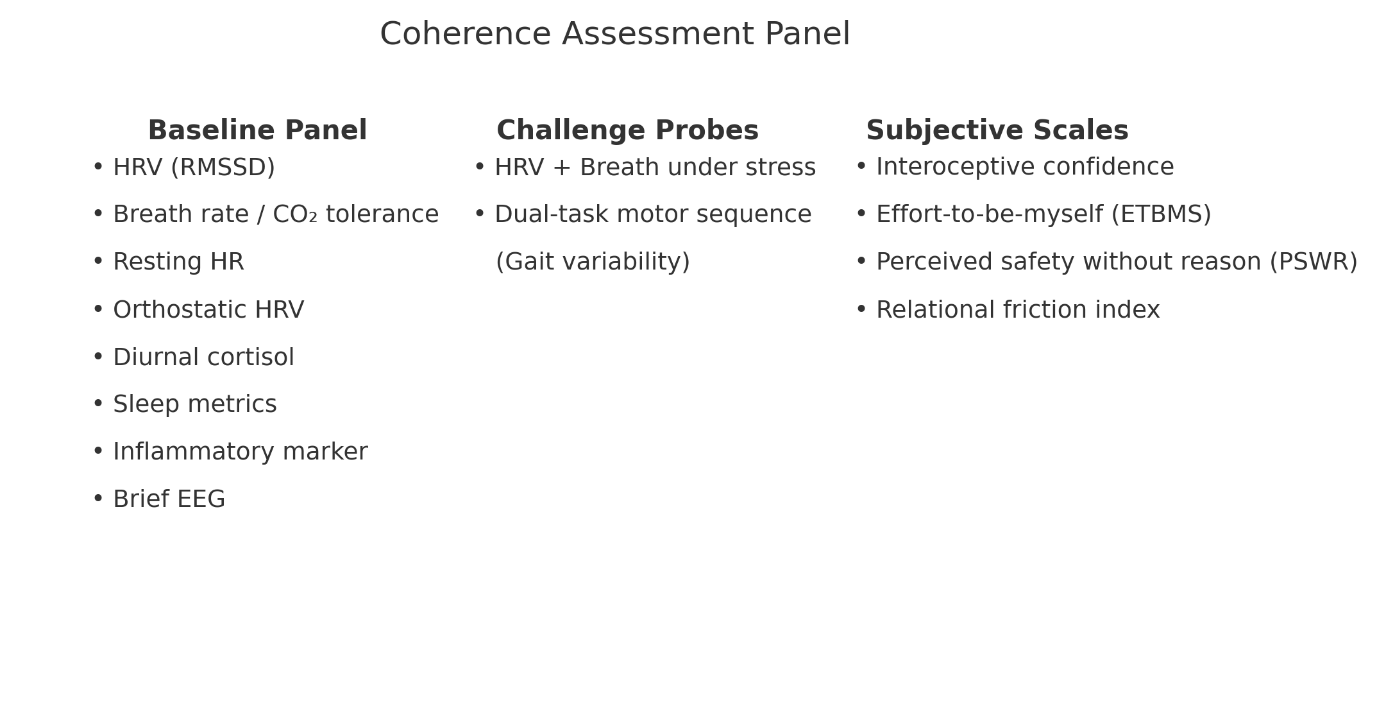
Assessment integrates objective metrics, challenge probes, and subjective experience to capture coherence traits.
Protocol anchors (non-directive, low-effort)
- Stillness windows: 2–10 min, 2–4×/day; no technique goal—allow field settling.
- Breath coherence: quiet nasal, low-to-mid tidal volume; short daily CO₂ tolerance play.
- Truth micro-acts: one small alignment per day (boundary, honesty, simplification).
- Environment tuning: light, sound, visual simplicity; nature contact.
- Movement: gentle variability (walking, slow spiral patterns), fascia hydration practices.
- Sleep boundary: pre-sleep light hygiene; consistent wake time.
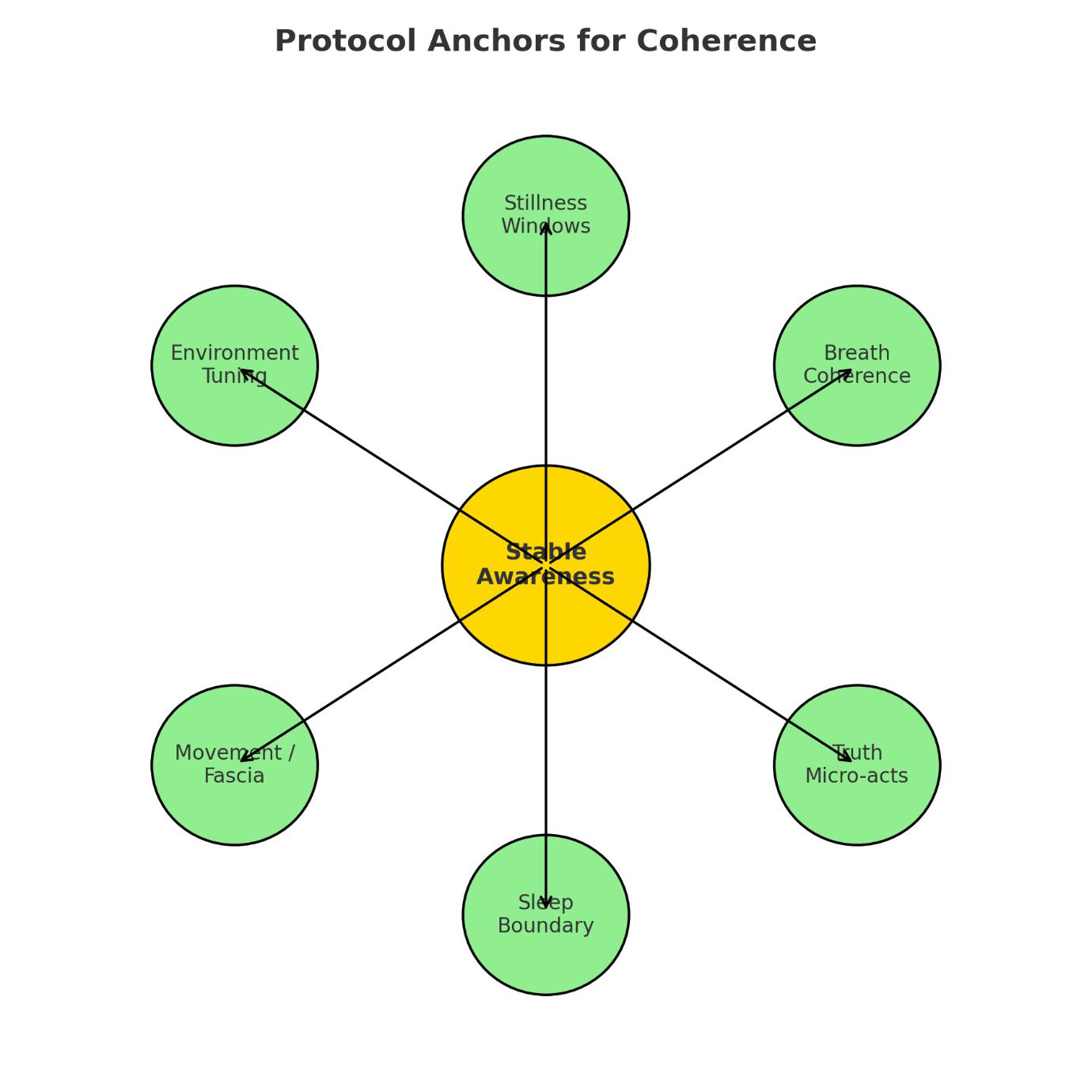
Daily anchors remove interference and allow the coherence attractor state to emerge naturally.
Principle: We are not “doing to” the body; we are removing interference so the attractor state can emerge.
7) Ethics, Scope, and Claims
This framework complements—not replaces—good medicine. It does not ask patients to abandon care; it reframes healing as the re-establishment of a coherent baseline that makes all interventions
more effective and often less necessary. We avoid absolutist claims and invite measurement, replication, and refinement.
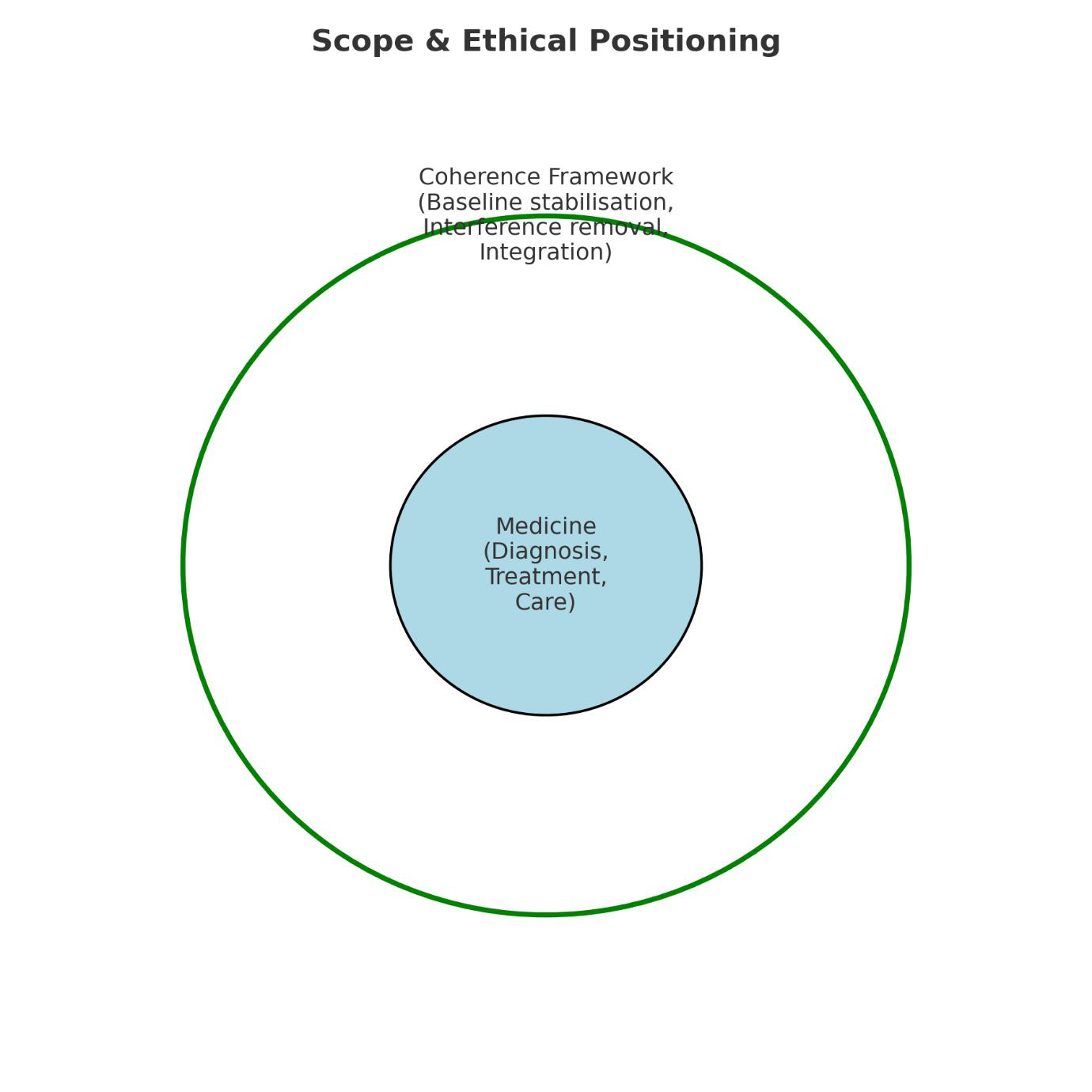
The coherence framework complements—not replaces—medicine, offering a baseline that makes interventions more effective.
8) Research Agenda (Near-Term Feasible)
- Trait vs. State: Longitudinal HRV/EEG + endocrine panels in individuals adopting non-directive stillness + truth micro-acts; pre/post + follow-up at 3/6/12 months.
- Mechanics & Medium: Pilot on fascia hydration (ultrasound shear wave elastography) vs. HRV and breath coupling changes.
- Network Dynamics: Portable EEG studies on gamma-theta coupling during ordinary tasks after 8 weeks of coherence practice.
- Composite Index: Validate a Coherence Index against subjective flourishing and objective health markers.
- Clinical Trials: Adjunct coherence protocol in anxiety, chronic pain, or burnout—compare cost, medication use, and function.
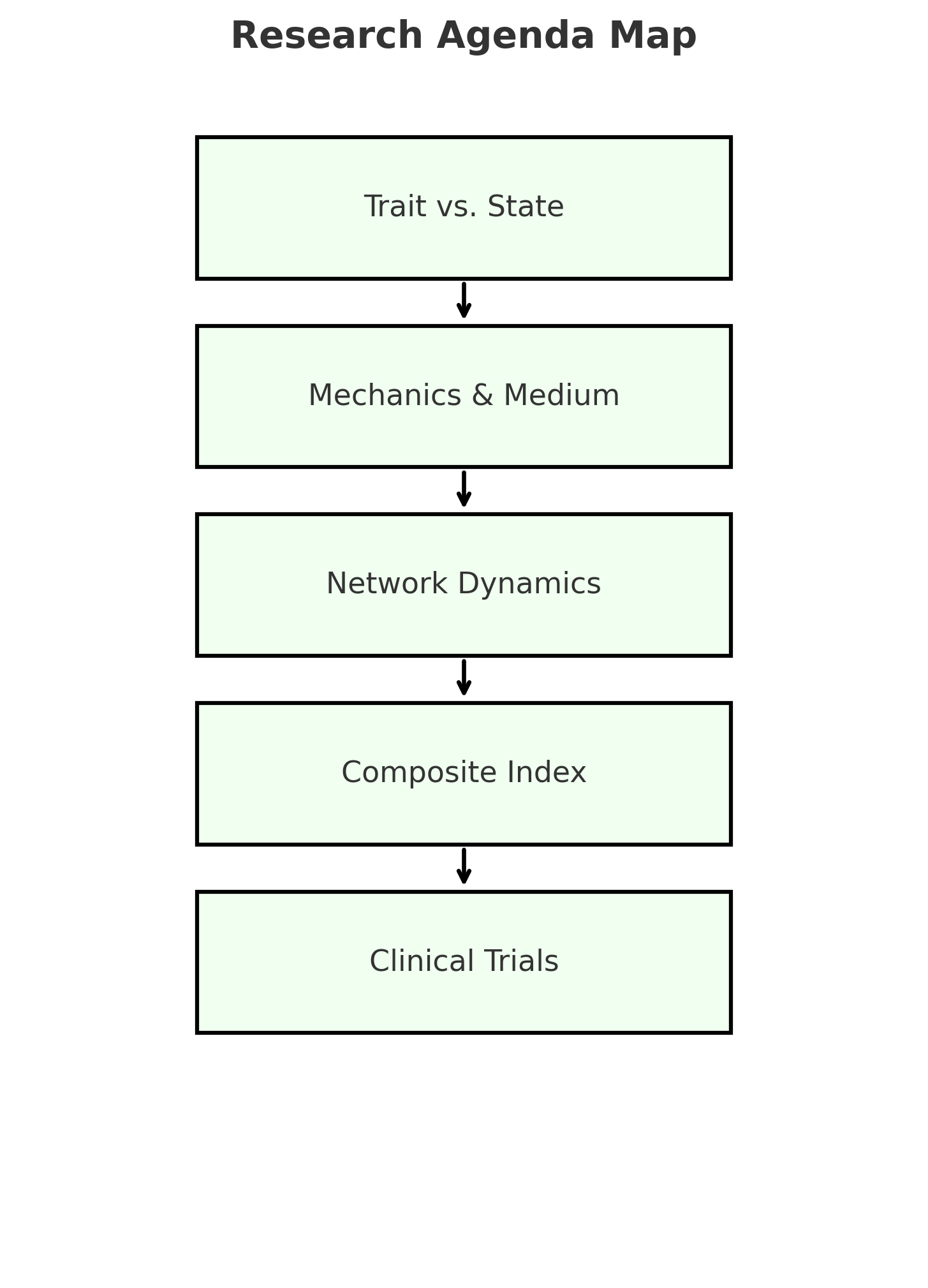
Research agenda for coherence: from trait vs. state tracking to clinical validation.
9) Conclusion
Stable awareness is not a rarified mood. It is a biological state—low-cost, high-clarity, quietly regenerative. By treating coherence as primary rather than incidental, we gain a unifying lens: metabolism finds elegance, hormones retune, brains quiet without dulling, fascia listens, and lives become simpler and more truthful.
This is medicine as remembrance: fewer levers pulled, more interference removed, and a body allowed to do what it was designed to do—cohere.